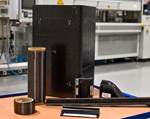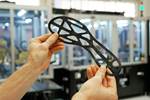Aerospace market report forecasts rapid composites growth by 2030
Persistence Market Researcher provides a comprehensive look on the recent developments shaping composites use in aerospace, detailing key market growth, challenges and emerging trends.
Market researcher Persistence Market Researcher (New York, N.Y., U.S.) has recently released a comprehensive report that studies the global aerospace composites market. Forecasts suggest that this sector will reach a value of $62 billion by 2030 with a compound annual growth rate (CAGR) of 10.8%. This rapid growth is reported to be driven by a focus on enhancing fuel efficiency and sustainability, with advancements in composites technologies — including innovative manufacturing techniques — further propeling their integration into next-generation aircraft as a strategic necessity.
In its report, Persistence cites 10 market trends in the aerospace composites market. These include growing demand for lightweight solutions, environmental sustainability, increased use in critical components, technological advancements, cost-effective solutions, regulatory standards and certifications, collaborations and partnerships, R&D investments, emerging markets, and a focus on durability and safety.
However, with growth drivers, there are also challenges — primarily, supply chain and regulatory complexities appear. The report notes that the “intricate nature of aerospace composites, involving specialized materials and complex manufacturing processes, disrupts the supply chain’s seamless operation.” Considering aerospace’s reliable on specific fibers like glass, carbon or aramid fibers, their sourcing tend to significantly impact production costs.
Moreover, navigating intricate regulatory landscapes poses another hurdle. The aviation sector, governed by stringent safety and performance standards, imposes rigorous regulations on aerospace composites manufacturers and stakeholders. Ensuring compliance with evolving regulatory frameworks and maintaining adherence to demanding testing and certification procedures is crucial due to the distinctive compositions and manufacturing methods of composites.
Nevertheless, opportunities are still available in this market, particularly regarding sustainability goals — i.e., enhancing performance while reducing fuel consumption and carbon emissions.
The report identifies key players in aerocomposites and recent significant developments in this space. In addition, it breaks down research categories based on fiber type, matrix type, application (interior or exterior), composites manufacturing technique, aircraft category and geographical segment.
For the complete market report, visit Persistence Market Research’s website.
Related Content
-
Composites manufacturing for general aviation aircraft
General aviation, certified and experimental, has increasingly embraced composites over the decades, a path further driven by leveraged innovation in materials and processes and the evolving AAM market.
-
Plant tour: Spirit AeroSystems, Belfast, Northern Ireland, U.K.
Purpose-built facility employs resin transfer infusion (RTI) and assembly technology to manufacture today’s composite A220 wings, and prepares for future new programs and production ramp-ups.
-
Manufacturing the MFFD thermoplastic composite fuselage
Demonstrator’s upper, lower shells and assembly prove materials and new processes for lighter, cheaper and more sustainable high-rate future aircraft.

















